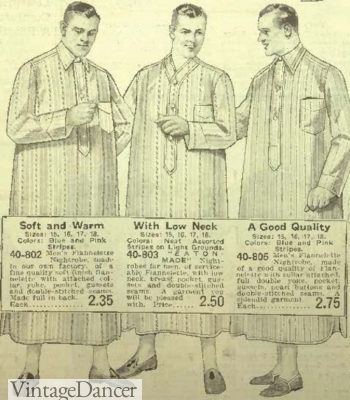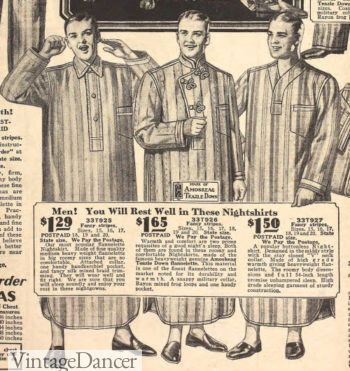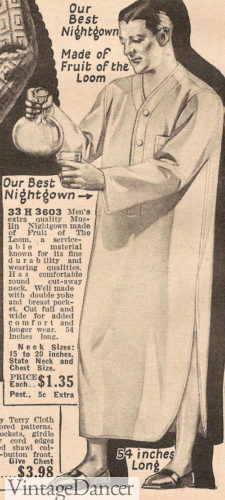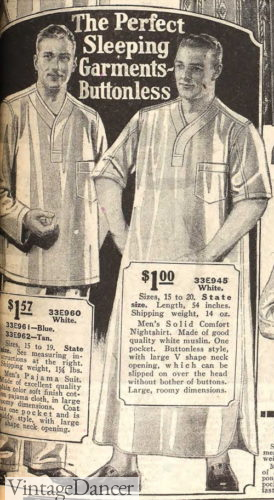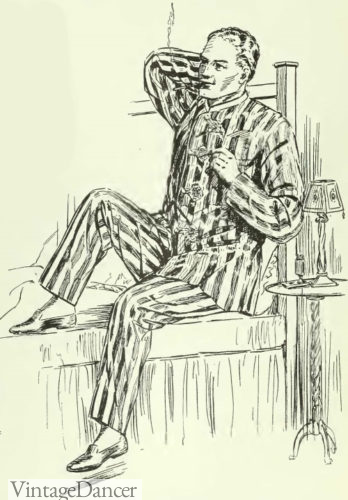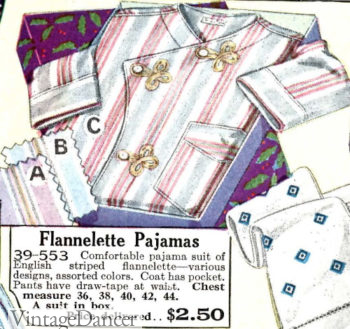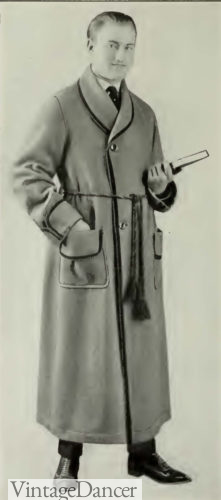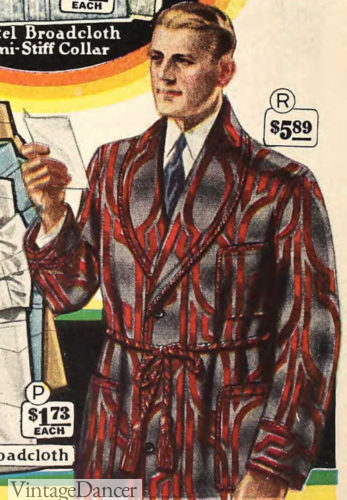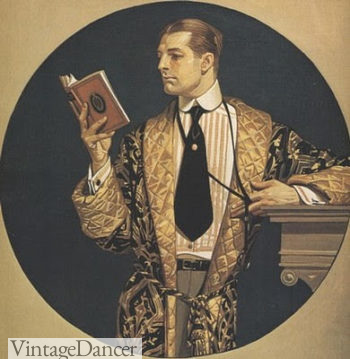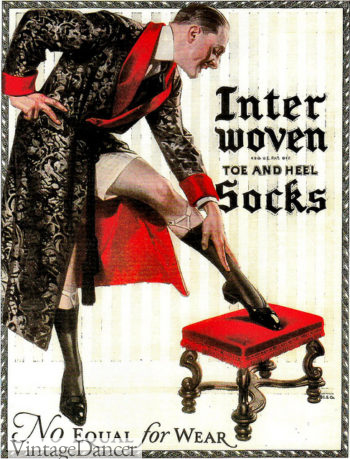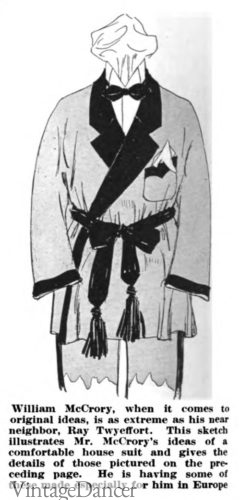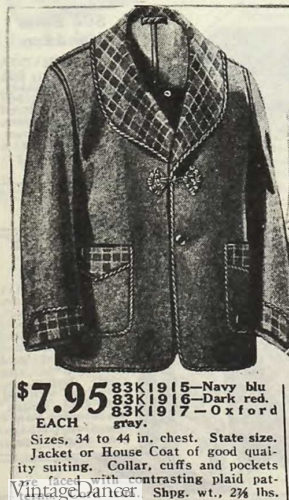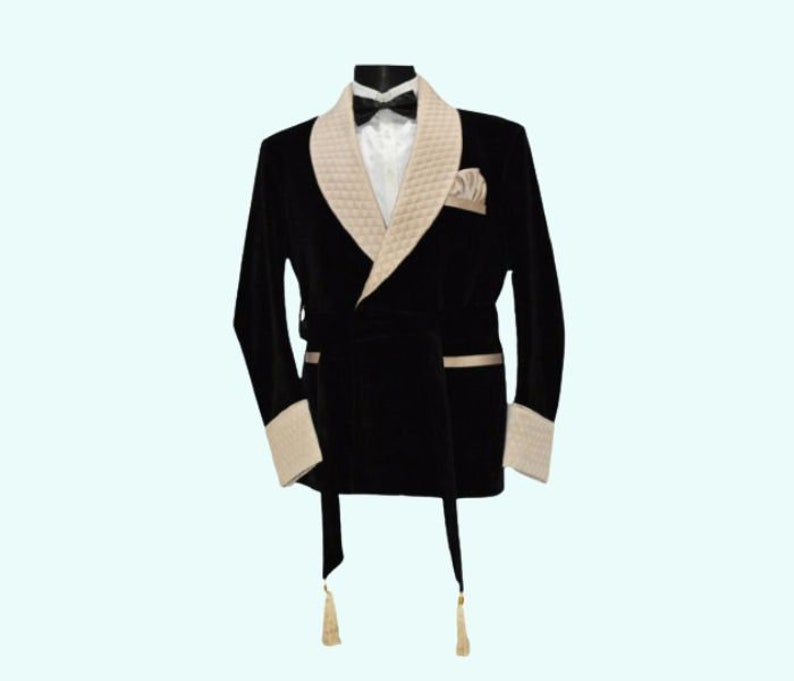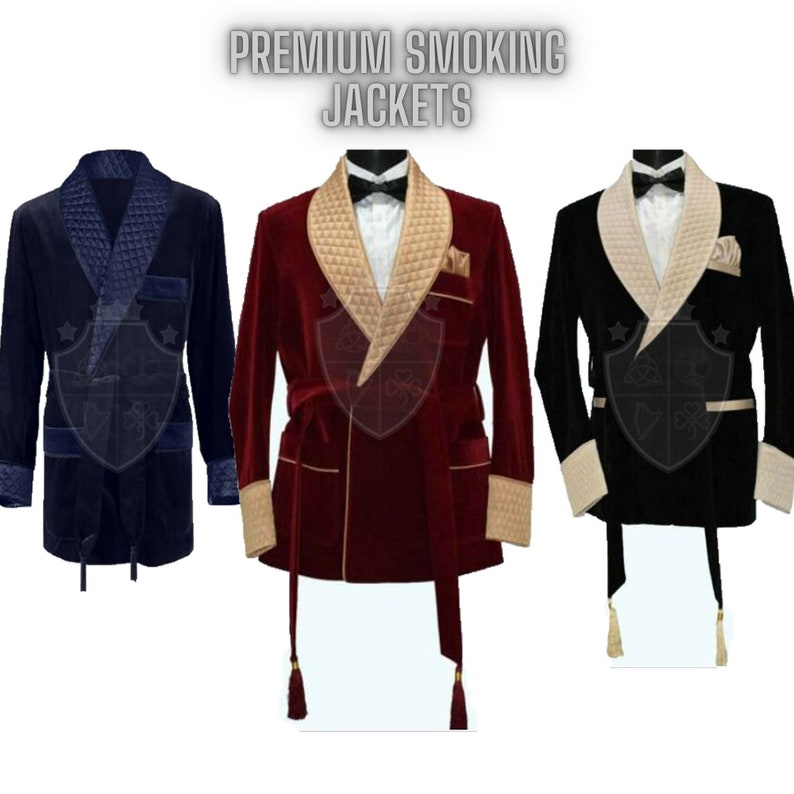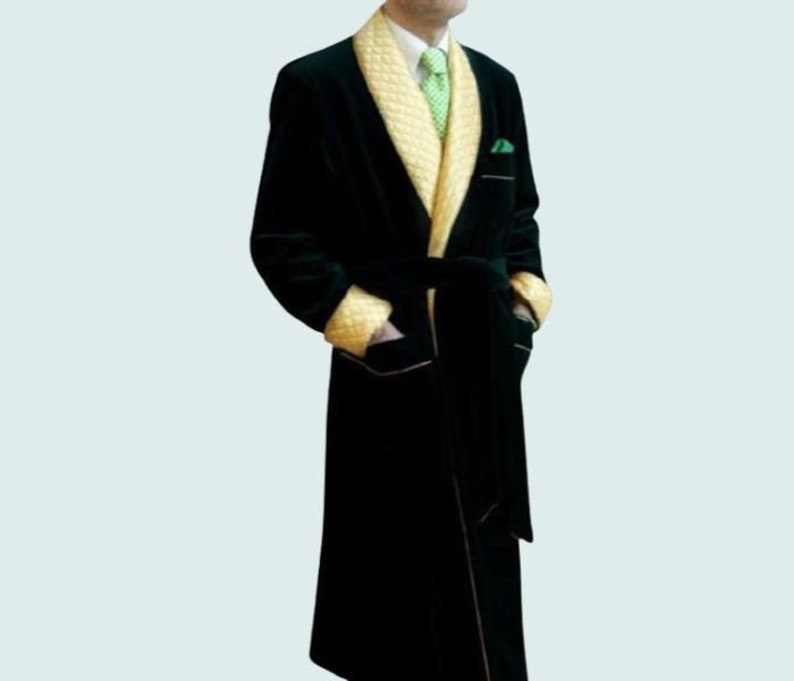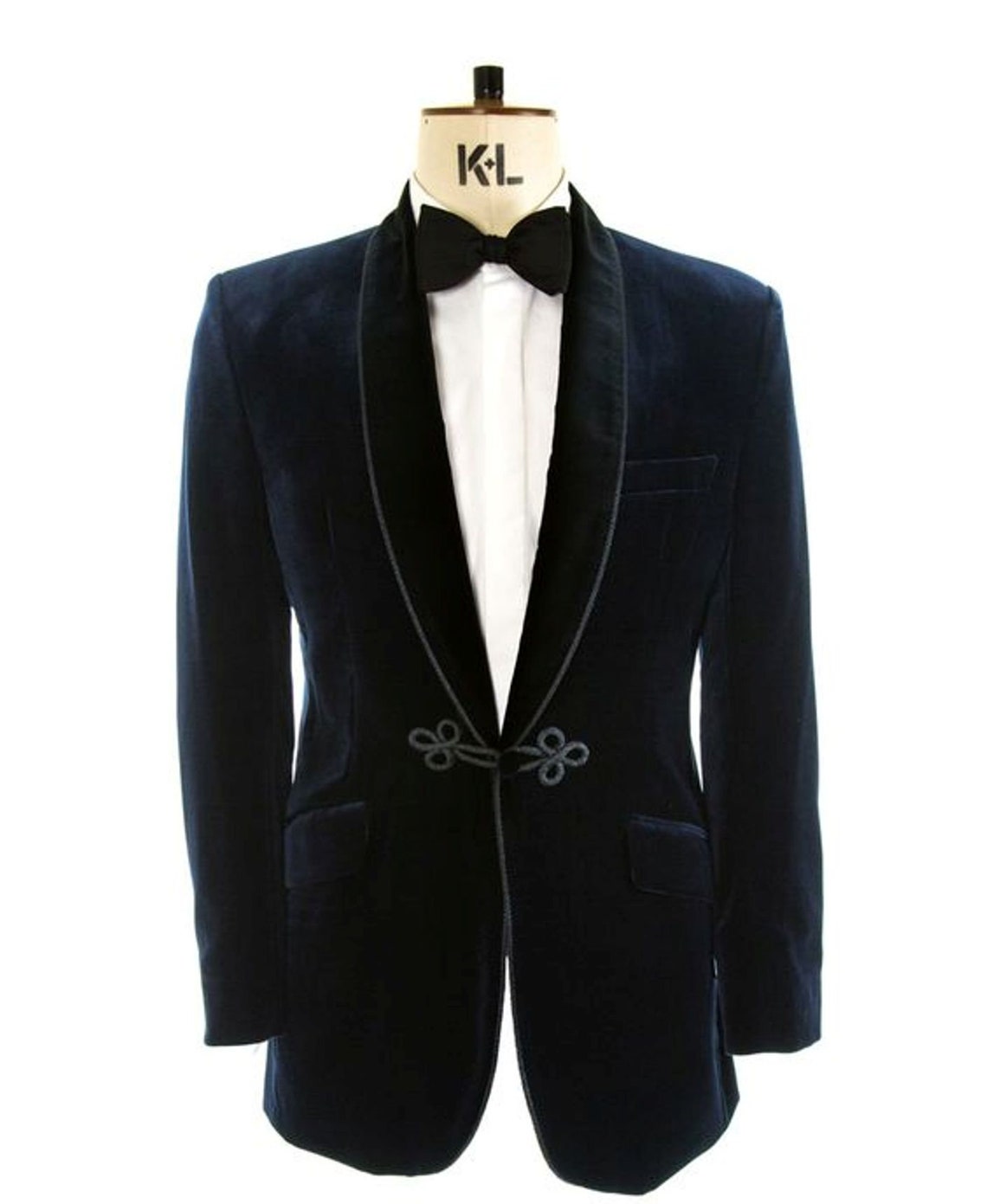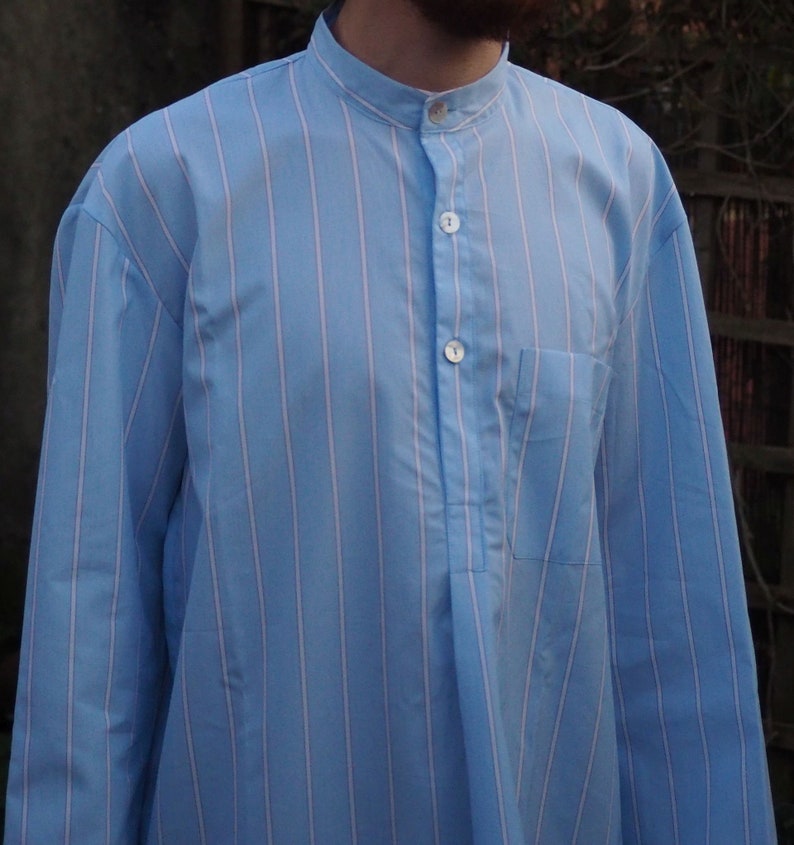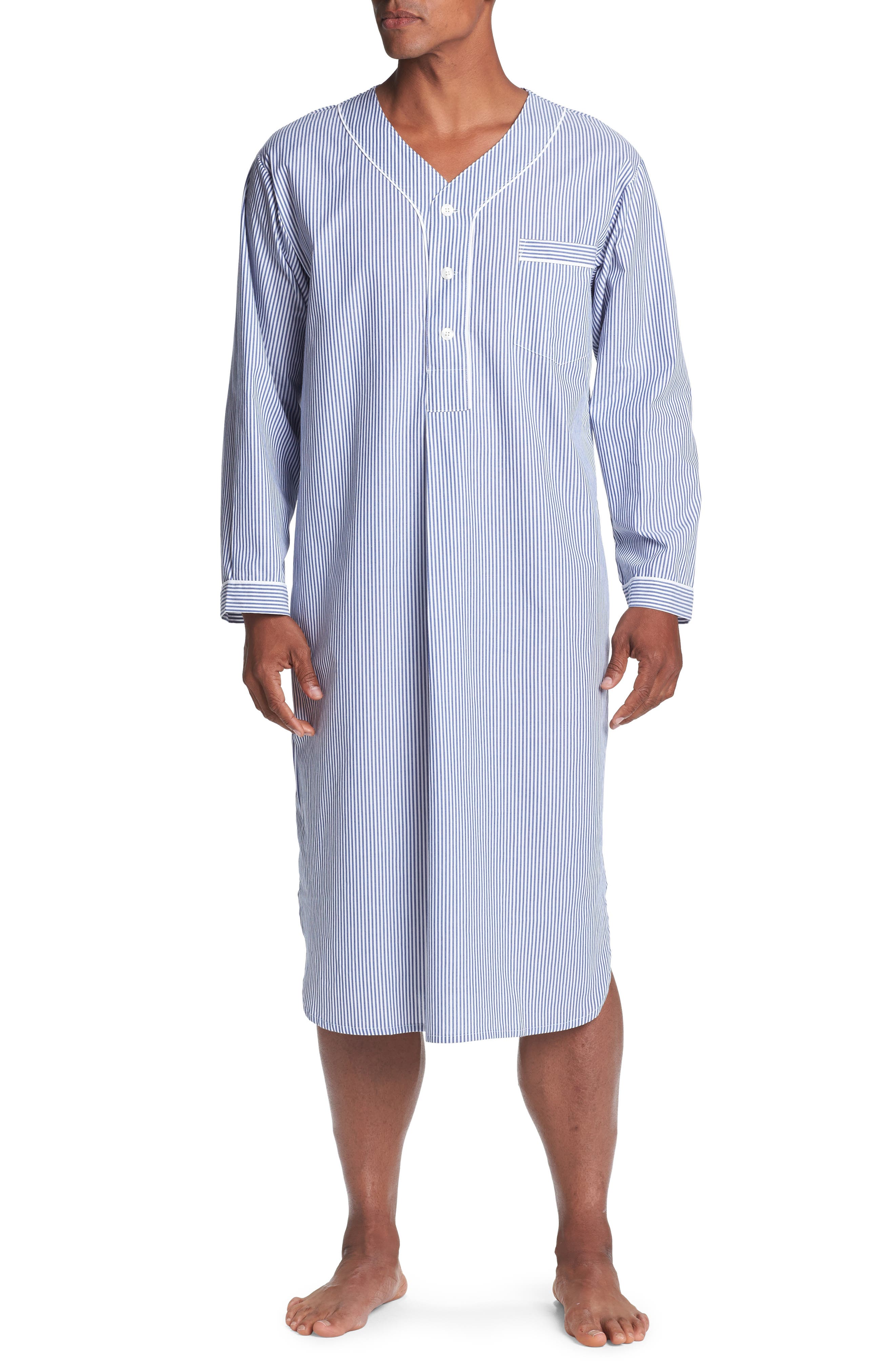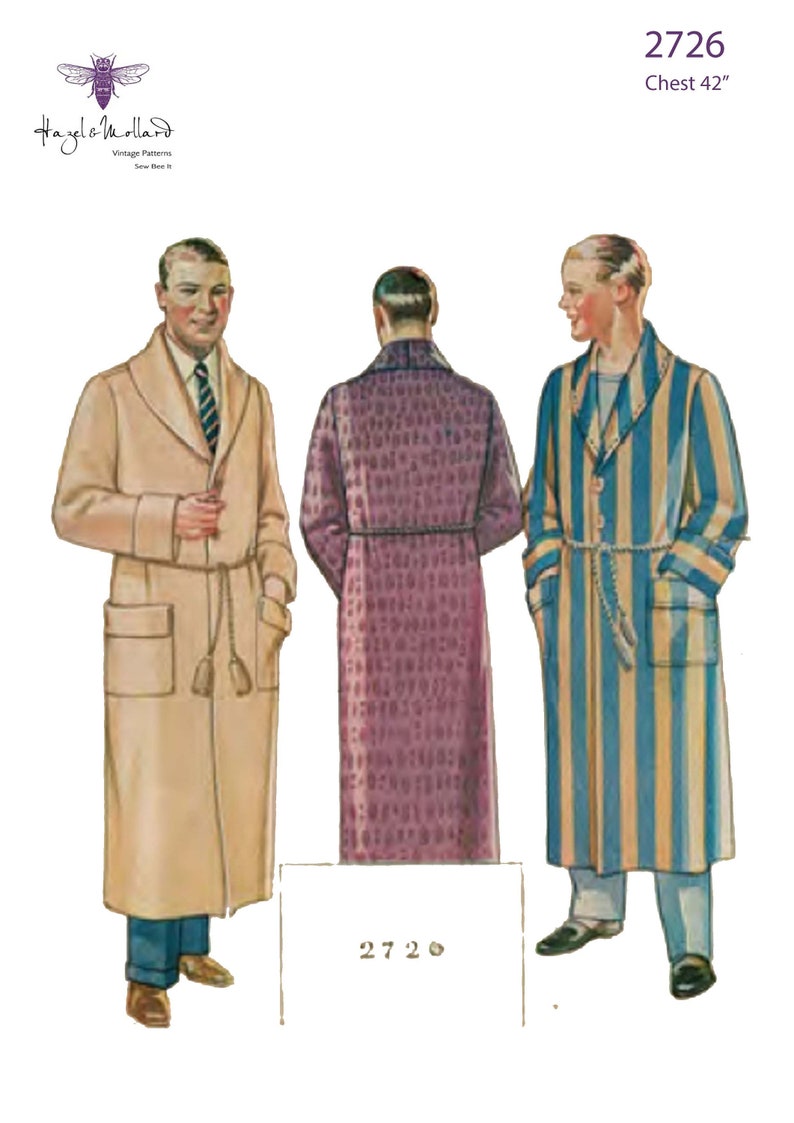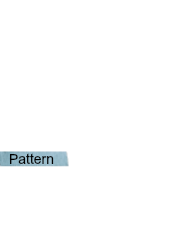Men’s vintage sleepwear, loungewear, and slippers have suddenly experienced a revival in the mainstream. I can think of a few reason why that may be but I would rather look at my favorite decade, the 1920s, to see what men’s pajamas, nightshirts, robes, smoking jackets and house slippers looked like. Want to add some to your wardrobe? Great! We have links to 1920s style night clothes and slippers you can buy today (scroll to the end).
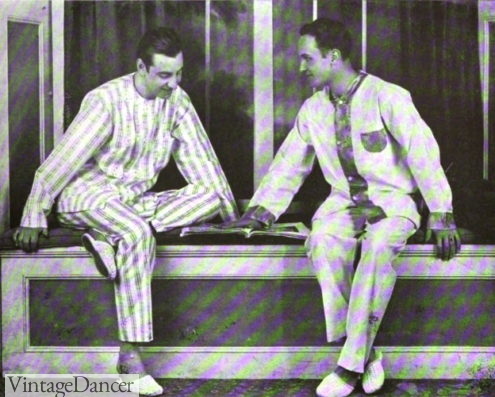
1920 men’s pajamas and slippers
Men’s 1920s Nightshirts
For going to bed, men had four choices: Nightgown, Pajamas, Underwear, or Nude.
The traditional nightshirt, nightgown or nightrobe was ankle length, long sleeved, with a button up military collar or V neckline made of cotton, wool, linen, or flannel. They came in solid white or pastel colored stripes such as alternating blue and pink. Some varieties feature short sleeves (elbow length) and no buttons- an easy to slip over style.
It was regarded as old fogies sleepwear, not snazzy enough for the new jazz era.
- 1920 nightrobes
- 1929 men’s nightshirts
- 1927 white “Fruit of the Loom” nightgown
- 1926 short sleeve button-less muslin nightgown
Men’s 1920s Pajamas
The newer trend from the 1910s onward was the two piece shirt and pants called pajamas / pyjamas. Some were really one piece pajamas with the top and bottom attached.
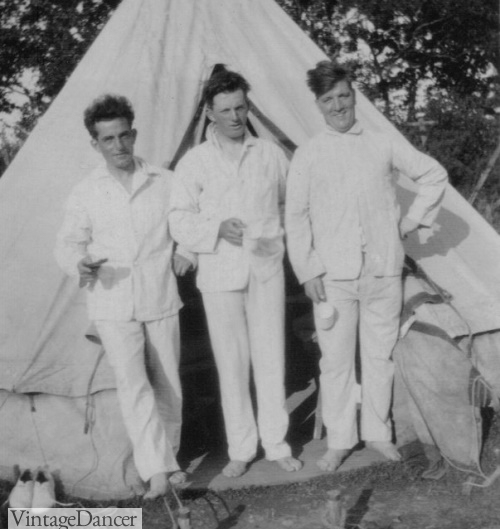
Men’s white pajamas while camping
Everyone wore vertical stripes unless they were boring and only wore white, tan or blue. Pajamas in cotton broadcloth, muslin, percale, crepe, rayon and silk replaced flannel nightshirts with even the most conservative men. Pajama pants came in traditional draw string or button waist but the new elastic waist was far more comfortable.
- 1920 striped pajamas
- 1928 blue and pink striped flannel pajamas
Shirts either buttoned up straight, with either a military collar or a mandarin style collar with overlapping panels. The V neck pullover model was popular with men who didn’t like sleeping with buttons. Many fastened not with buttons but with Chinese frog clasps. Some also had Japanese Kimono sleeves and soft round mandarin collars. The Asian influence was heavy in men’s sleepwear.
The Art Deco influence was also prominent in men’s sleepwear. Many styles came in art deco prints, jacquard textured prints, and decorated with piping, passementerie trim, and mother of pearl buttons.
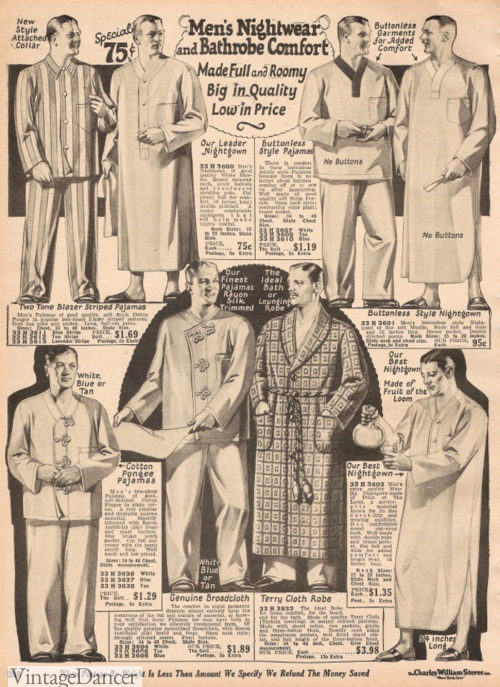
1927 men’s pajamas, nightshirts and terry cloth robe
What about underwear? Surveys of family clothing plans don’t often include the purchase of men’s pajamas. Because men’s underwear were full body suits (onesies or long john types) there was little need to own specialty sleepwear. Most men wore underwear or nothing to bed and lounged in a robe around the house. See more about men’s 1920s underwear.
Men’s 1920s Robes
The typical house robe was made of thick blanket cloth or wool blends in winter and lighter flannels in summer. They came very long in plaids, stripes, and geometric prints with a shawl or notched collar and tasseled silk cord ties. These were worn after work, when a man took off his suit and stiff shirt and put on his elegant house robe.
- 1920 robes
- 1924 robe
- 1920 dressing gown
- 1929 robe
Wealthy men could afford a silk robe in a solid or Asian print with contrasting edging. These were fine for house lounging and dressing in the morning but were not intended for use in the bathroom where water could damage the silk.
- 1920 gold faced quilted silk robe
- Silk damask robe with red trim
1920s Smoking Jackets
Hip length smoking jackets, made of wool or camel hair cashmere with a tasseled cord, were fashionable in the Edwardian era but faded in the 1920s. Instead it was the lightly tailored lounge suit. Collars were usually wide shawl lapels, sometimes made of contrasting satin, with a deep V front opening. Loose trousers were made in matching fabrics featured a cuff.
The jacket only option looked more like a tuxedo jacket with frog clasps for buttons. Many were also made entirely of of silk, brocade, velvet, or had a silk body and velvet shawl collar. Solid colors of rich gold, black, or maroon were the most common, but the Asian influence hit again and prints and embroideries of dragons and other Asian arts covered many.
- 1922 men’s house suit or smoking jacket and pants
- 1922 house coat or smoking jacket
The lounging suit could be worn at home with one’s family but never in mixed company. As such it was only worn by affluent men.
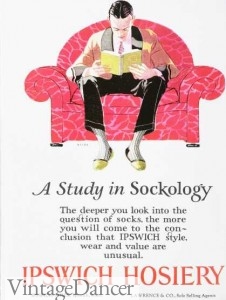
House coat and coordinated lounge pants
Since men’s night clothes and robes were now more handsome, colorful, and fashionable, it wasn’t enough just to wear them in your bedroom, but out in the rest of the house. There was etiquette on how to wear sleepwear:
“With a dressing gown, a man should hold himself over his hips, legs wide, feet pointed outward, because the folds of the falling fabric must be maintained. The chest is held flat the abdomen pushed forward and one walks slowly with long strides.”
“One should walk quickly legs outstretched and close together, with chest and shoulders understated to make the neck appear longer.”
Men’s Slippers
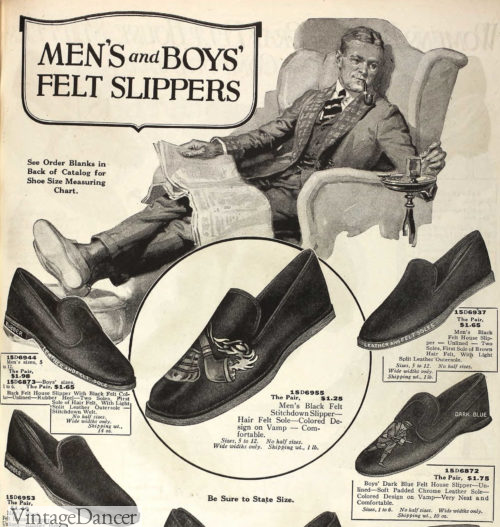
1920 men smoking in a house coat with felt wool slippers, motifs of smoking and hunting
Men’s house slippers were the other item men changed into when lounging at home. They were made of wool felt, brown or black leather, reptile textured patent leather or a blanket cloth. Many were lined in the same warm cloth that robes were made from. Colors tended to be dark blue, grey, black or brown until the Art Deco influence increased colors in the 1930s.
There were a few common style of men’s house slippers:
- Romeo- Elastic side panel on a half boot
- Opera – Wide V notches on the sides – often colorful with fancy silks or smooth soft leather
- Everett- a plain slip on loafer. Some featured painted motifs of smoking pipes, hunting or other manly pursuits on the vamp
- Hi-low – an Everett bootie with edges that fold up or down
- Cavalier boot- a full slip in felt boot
- Moccasins- Native American moccasins in tan leather were less common but available
Shop vintage style house slippers
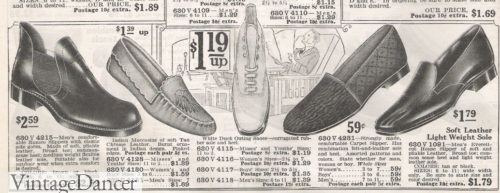
1922 slippers – romeo, moccasin, canvas sport shoes, carpet slippers, everett
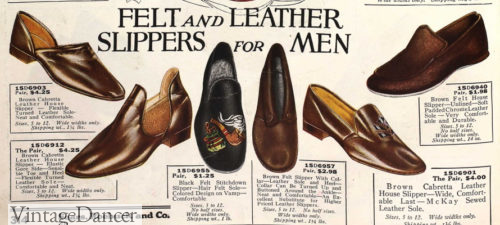
1920 leather slippers- opera, romeo, everett with pipe motif, Hi-Lo, Everetts
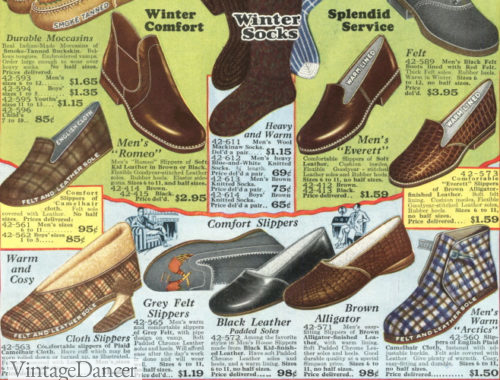
1928 leather or cloth slippers
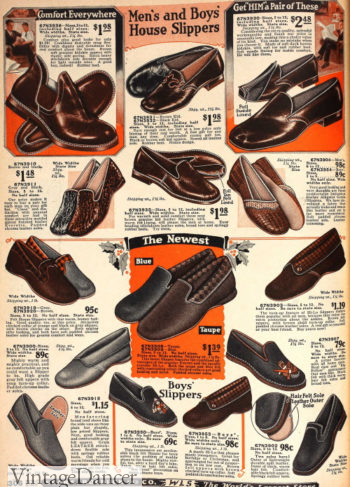
1928 men’s slippers
Continue reading about 1930s sleepwear and slippers.
Vintage style pajamas and slippers
More shops
- Brooks Brothers – Classic boxers, French back boxers, undershirts, socks
- Sunspel – Some classic boxer shorts and undershirts
- Uniqlo – Affordable essentials, classic cuts, made in Japan.
- Brycelands – French boxers, button down undershirt, pajamas
- Darcy Clothing – Historical reproduction undershirts, long johns, vests, singlet, cotton boxers
- Gota Waesche (DE) – Cotton Henley shirts, underwear, boxers, knitwear
Debbie Sessions has been teaching fashion history and helping people dress for vintage themed events since 2009. She has turned a hobby into VintageDancer.com with hundreds of well researched articles and hand picked links to vintage inspired clothing online. She aims to make dressing accurately (or not) an affordable option for all. Oh, and she dances too.
